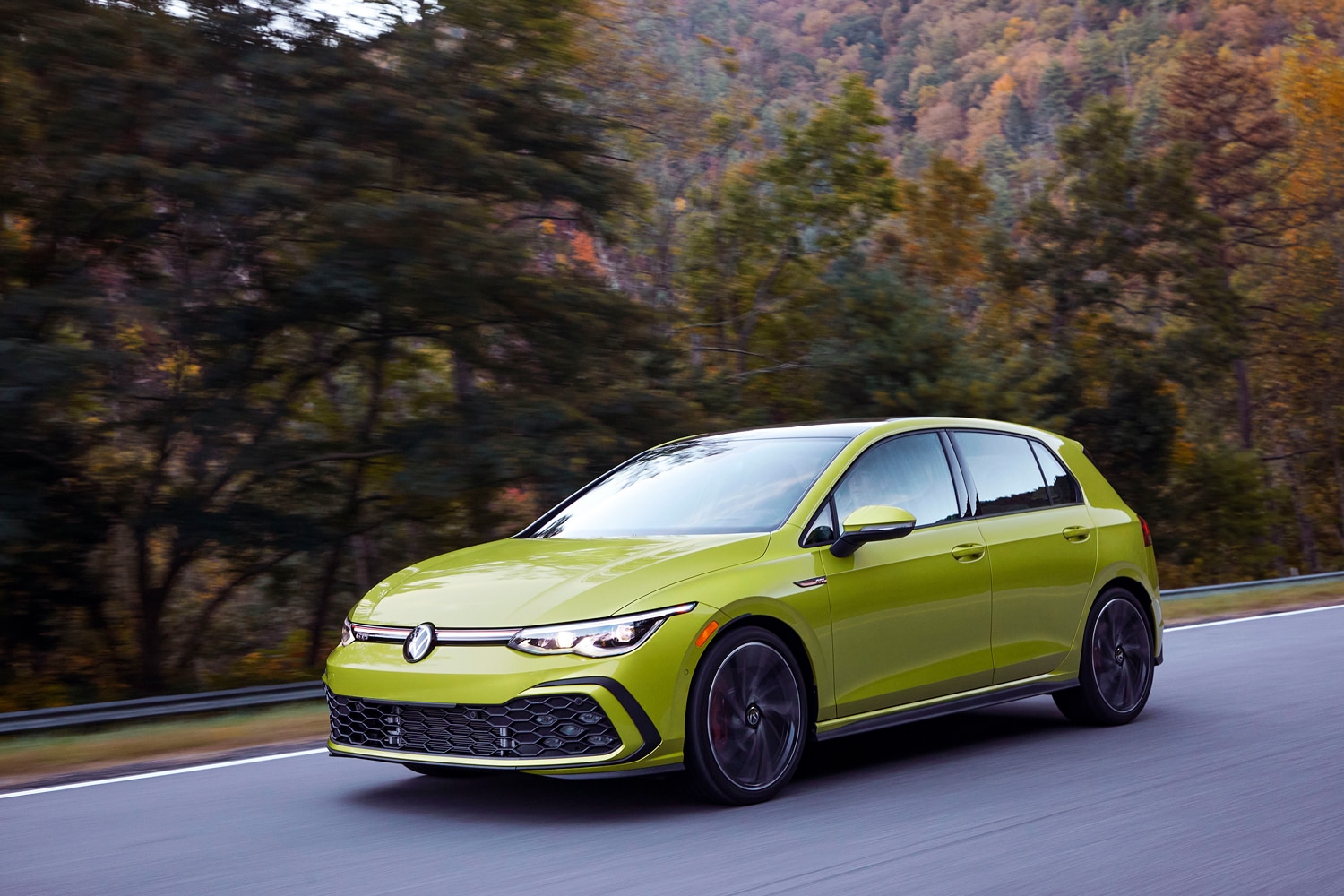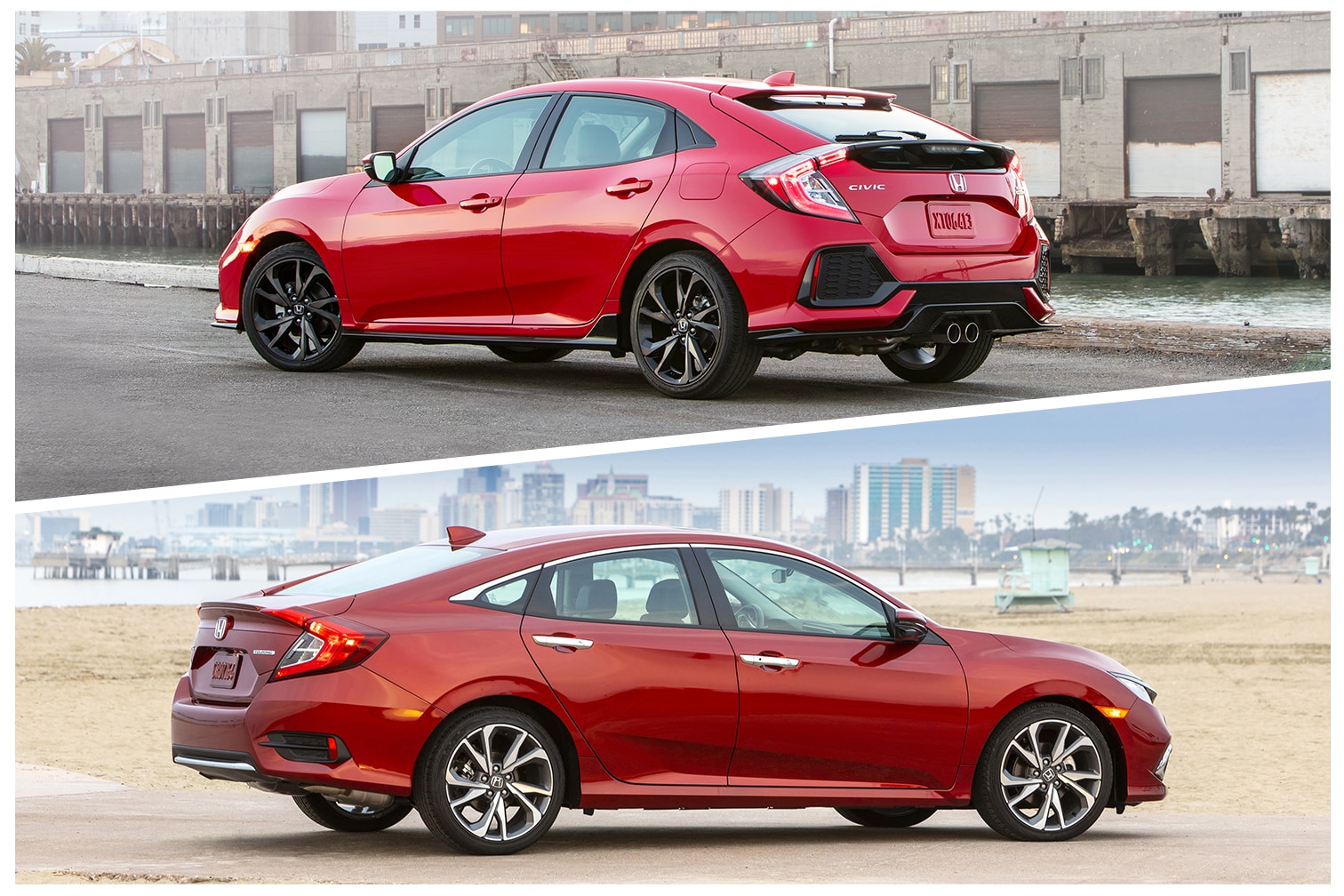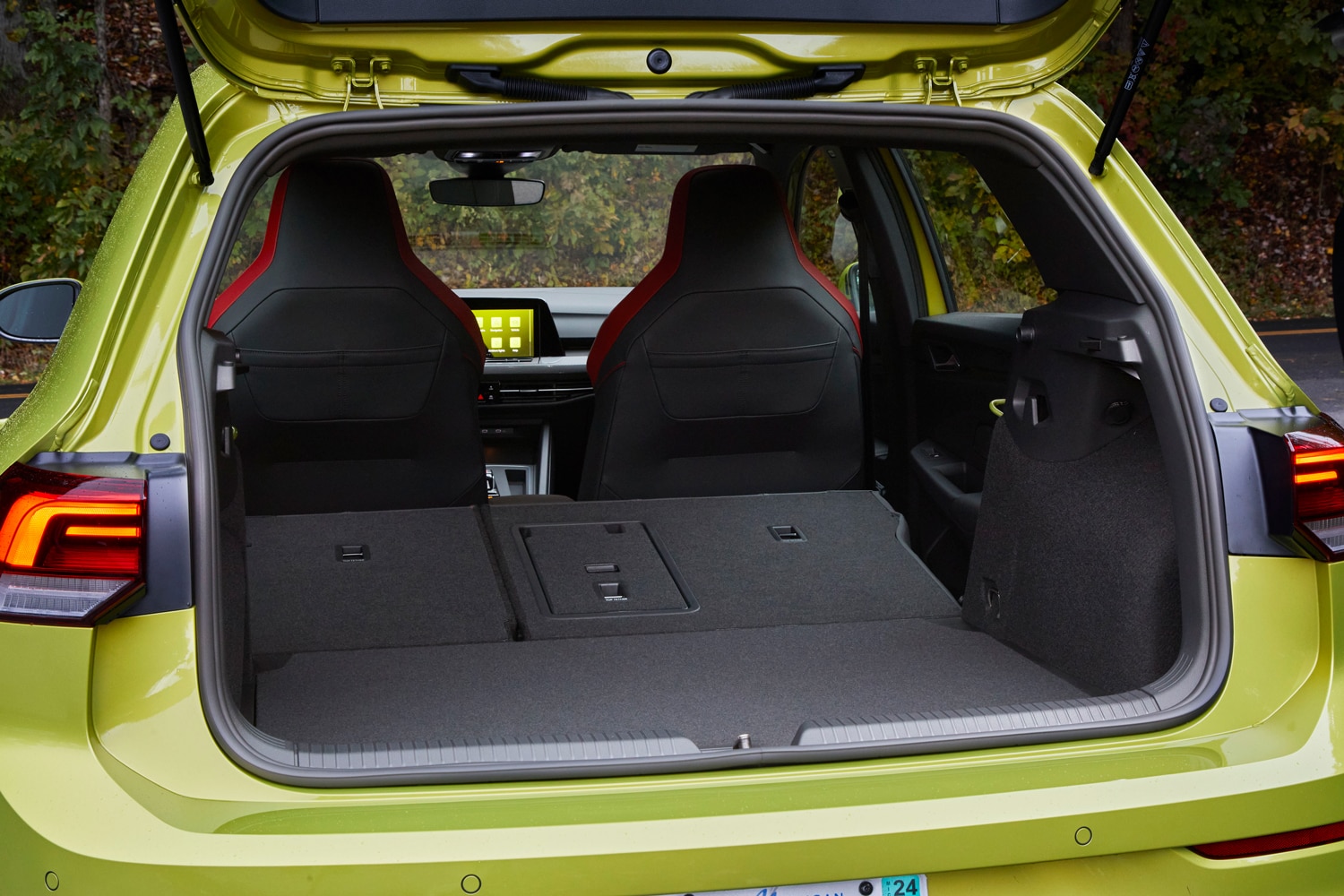What Is a Hatchback?
These small cars have a liftgate at the rear and offer more cargo space than comparable sedans.
 Volkswagen
Volkswagen
If ample cargo capacity is a must-have on your shopping list and you want the small size and superior fuel efficiency of a car, not an SUV or van, you should take a look at some hatchbacks. These small vehicles are best-sellers in many overseas markets, and are available from a number of different automakers. Now, let’s get into some details.
What is a hatchback?
A hatchback is a small car with a one-piece liftgate (aka a hatch) at the rear that opens wide to reveal a luggage compartment that’s low to the ground and easy to access. Modern examples include the Volkswagen Golf GTI and R, Toyota Prius, Honda Civic, Toyota Corolla, Subaru Impreza, and Mazda 3, the last four of which also offer a sedan body style.
 Honda
Honda
Sedan vs. Hatchback: What’s the Difference?
It all has to do with the rear end. A sedan has a trunk—that is, a cargo hold that’s wholly separated from the passenger area by the rear seatback and fixed shelf below the rear window. The door that covers the trunk (known as a trunklid or decklid) hinges below that window, and when you pop it open, you won’t be able to see into the cabin from the cargo area unless you have the back seats folded.
 Volkswagen
Volkswagen
A hatchback doesn’t have that separation from the cabin, nor does it have a decklid. When you raise the liftgate—which hinges at the roof—you can see directly into both the cargo and passenger areas. A removable or retractable cover is often available to keep valuables hidden from prying eyes, but the ability to stack belongings to the roof of the car gives hatchbacks more cargo space than similar sedans.
A sedan has a “three-box” design: Viewed from the side, the nose to base of the windshield makes up one box, the passenger compartment makes up another, and the trunk makes up the last. A hatchback is a two-box vehicle, lacking that third box as the roof line doesn’t drop in the rear to form a trunk.
Aren't All Crossovers and SUVs Technically Hatchbacks?
Today, lots of vehicles—from a budget-minded Toyota Corolla to a luxurious SUV like a Cadillac Escalade—have two-box shapes with liftgates in the back. Does this mean the hulking Cadillac is a hatchback? Nope. That’s because the term “hatchback,” when used as a replacement for a body style, relates only to small cars.
Station wagons, such as the Subaru Outback and Audi A4 Allroad, also have hatches in the rear, but they don’t fall into the hatchback segment due to their length. It’s a slight distinction, but a wagon is typically a bit longer than its sedan equivalent, whereas a hatchback, like the Mazda 3, is generally shorter than the three-box model.
What Is A Hatchback, but Not a Hatchback?
Stranger still, some automakers avoid using the term hatchback because people associate it with cheap, no-frills transportation. This may explain why Audi calls the liftgate version of its A5 luxury sedan a Sportback.
But while the term might have lost some popularity, the design isn’t fading into the automotive sunset. Small electric vehicles like the Chevrolet Bolt and Polestar 2 both have cargo holds capped with a convenient liftgate and reasonably qualify as hatchbacks.
Written by humans.
Edited by humans.
 Nick Kurczewski
Nick KurczewskiNick Kurczewski is a freelance automotive journalist based in the New York metro area. With approximately 20 years of experience, he has covered all aspects of the car world, from the pit lane at the 24 Hours of Le Mans, to car shows around the world, and a Zamboni lesson in Lower Manhattan. He’s also adept at providing helpful car advice and steering people towards the ideal car, truck, or SUV for their driving needs.
Related articles
View more related articles